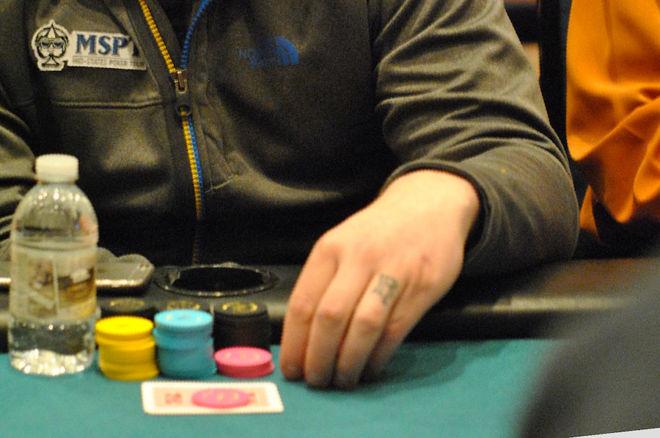Hand Review: Reacting to Short Stacks Shoving

Covering live poker tournaments for a living affords me the opportunity to see countless thousands of hands played out, many of which offer interesting and potentially valuable insights into how players — both amateurs and professionals — play the game. In this ongoing series, I’ll highlight hands I’ve seen at the tournaments I’ve covered and see if we can glean anything useful from them.
The Scene
Back on the strategy horse for another hand review this week, and it's the author taking a starring turn again, this time for a hand I played in the Mid-States Poker Tour Meskwaki $1,100 Main Event in Iowa last week. The tournament is kind of in the middle of nowhere and it typically draws a very soft but big field.
This hand occurred late on Day 1b at the 500/1,000/100 level. The player on my immediate right was quite nitty and clearly really valued his tournament life, playing a very tight and passive style. I had around 30,000 or so, enough to cover his stack of about 25,000, when the hand began.
The Action
A player first to act, who had a little under six big blinds, moved all in. Action folded to the small blind, who made the call. I looked down at K♣10♣ in the big blind and moved all in over the top. The small blind hemmed and hawed for a bit and then folded.
The under-the-gun player showed down Ax6x and went bust when I paired up on the flop.
Concept and Analysis
While we'd all love to sit there and play small ball and slowly construct towers of chips reaching up to the moon, sometimes you get spots where you can just gamble for chips with a positive expectation. This was one of those spots.
Under-the-gun shoving ranges are an interesting thing to think about in these tournaments. Your basic shove-or-fold chart — these can be easily found from a variety of sources and should be studied by all tournament players — will tell you that with six BBs an under-the-gun shipping range is actually still fairly snug, consisting of something like the top 20 percent of hands.
In practice, however, I've found that many players shove much wider than that from UTG because they don't want to go through the blinds. They'll actually jam many more hands than they would in second position, usually any ace, any suited king, and many suited gappers and low connectors that are supposed to be folds.
In response to this, I'll usually widen my calling range and comfortably call with stuff that's supposed to be a mathematical dog. However, this situation had a bit of a twist with a nitty player who overvalues his tournament life calling from the small blind for a decent chunk of his stack.
With what sorts of hands is the small blind calling the short stack's shove? I can expect him to probably fold weaker Broadway combos but I'm guessing his range is something like ace-jack or better, king-queen suited and middle pairs. I was pretty confident he would just jam big pairs and possibly ace-king as well.
Now K♣10♣ does fairly poorly against this range, with the calculator spitting out about 38 percent equity. Certainly, just calling is an okay option here as I'm nearly always going to realize my equity and have position.
However, I think jamming is even better because the likelihood of getting a fold here is just so high. At that point, I get to race with a wide range getting more than 2-to-1 on my money, a lovely spot for both of us with the dead call in there. I doubted my reshove would get called with worse than ace-king by this player, meaning the vast majority of his range is folding. I even have a blocker to make that hand a bit less likely.
Everyone knows about the cooperation play and there's definitely a time and a place for that. However, you can't only think about eliminating other players, especially in the relatively early stages of a tournament. You have to be more selfish than that and think primarily of how you can add chips to your stack.
In the aftermath of this hand, the small blind told me he was relieved he had let his AxJx go as I'd have outdrawn him. However, he should really have been lamenting letting me in the pot in the first place. From his point of view with a hand that strong, he really should be shoving to isolate the short-stacked shipper.
Don't be too worried about eliminating short-stacked players. If you think you can leverage their shoves to your own benefit, try to get yourself in a good spot to pick up chips, even it lessens the likelihood of knocking someone out.









